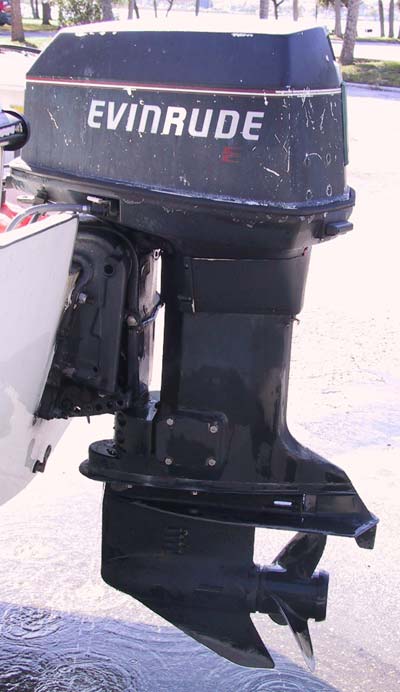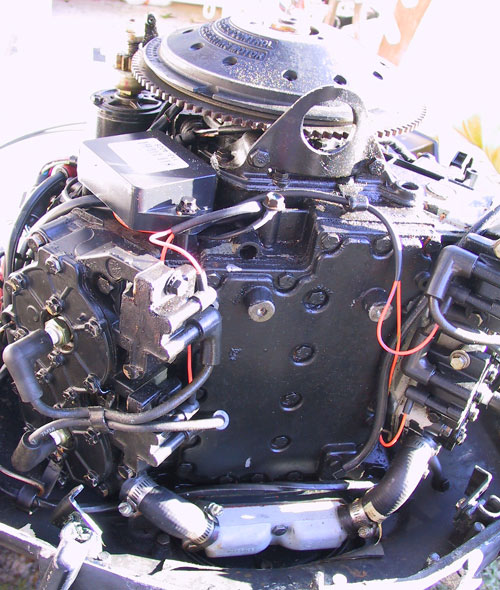

Fuel Pumps
General Information
Fuel Pump Description/Operation
Testing
Troubleshooting Fuel Pump
Fuel Pump Components
Fuel Pump Removal/Installation
Fuel Pump Cleaning, Inspection, Disassembly and Reassembly
Fuel Pump – Cleaning/Inspection
Check Valve Reassembly
Carburetion
Fuel System Troubleshooting
Checking for Restricted Fuel Flow Caused by Anti-Siphon Valves
Fuel System (Carburetor)
Fuel System (Linkage)
Carburetor Adjustments
Initial Starting Adjustment
Low Speed Mixture Adjustment
Carburetor Float Adjustment
Specification Sheet - WME Carburetors
Carburetor Fastener Torques
Settings
Fuel Pump Specifications
Fuel Pump Pressure
Sealants
Idle Speed Adjustment
Main (High Speed) Jet Adjustment
Rejetting Carburetors For High Altitude Operation
Jet Orifice Size/Part Number Chart
Carburetor Removal and Disassembly
Carburetor Disassembly
Cleaning and Inspection
Carburetor Reassembly
Idle Air Screw
Enrichener System
Enrichener Valve Hose Installation
Enrichener Valve Test
Acceleration Pump Fuel Flow Circuit
Fuel Tank
Fuel Tank Components
Fuel Line and Primer Bulb Assembly
Fuel Line Clamp Removal and Installation

1981 Johnson/Evinrude 4HP Outboards Service Manual Original factory service manual for 1981 Johnson 4HP Outboard Motors. Model covered by this manual: E4WCI E4BRCI E4BRLCI J4WCI J4BRCI J4BRLCI Item Number: 392069 Manual covers all procedures on repair, maintenance and problem troubleshooting. Manual chapters: - Introduction - General.
1988 Johnson 88 HP 88MSLCC SPL. This 88 horsepower Johnson outboard, manufactured in 1988, is a saltwater model. Johnson Outboard Manual. Johnson - Evinrude Service Manual Application: Outboard & Sea Drive (Sea Drives) For 48 50 55 60 65 70 75 85 88 90 100 110 115 120 135 140 150 175 185 200 225 & 235 HP (Horsepower - Horse Power) Outboard & Sea Drive Marine Engine Johnson/Evinrude 2Stroke 2-Stroke Two Stroke & 4Stroke 4-Stroke Four Stroke models. Evinrude Johnson Outboard 1.5-35 Hp Service Manual1965-1978 Download Now; Johnson/Evinrude Outboard 1965-1978 1.5-35HP Repair Manual Download Now; Johnson/Evinrude Outboard 1973-89 48-235HP Repair Manual Download Now. 1987-89 Johnson 88 HP SPL Version 2 Outboard Reproduction 6Pc Marine Vinyl Decal. 1998 Johnson Evinrude Outboard 90 115 SPL Factory Service Manual P/N 520209. $79.89 previous price $79.89 + $5.95 shipping. Seller 99.7% positive.
Johnson 88 Special Outboard Motor

Fuel Pumps
General Information
FUEL PUMP DESCRIPTION/OPERATION
The fuel pump is a crankcase-pressure-operated, diaphragm-
type pump. Crankcase pulsating pressure
(created by the up-and-down movement of piston) is
transferred to fuel pump by way of a passage (hole)
between crankcase and fuel pump.
When piston is in an upward motion, a vacuum is
created in the crankcase, thus pulling in a fuel/air mixture
(from carburetor) into crankcase. This vacuum
also pulls in on the fuel pump diaphragm, thus the inlet
check valve (in fuel pump) is opened and fuel (from
fuel tank) is drawn into fuel pump.
Downward motion of the piston forces the fuel/air mixture
out of the crankcase into the cylinder. This motion
also forces out on the fuel pump diaphragm, which, in
turn, closes the inlet check valve (to keep fuel from returning
to fuel tank) and opens the outlet check valve,
thus forcing fuel to the carburetors.
CHECKING FOR RESTRICTED FUEL FLOW CAUSED
BY ANTI-SIPHON VALVES
While anti-siphon valves may be helpful from a safety
stand-point, they clog with debris, they may be too
small, or they may have too heavy a spring. Summarizing,
the pressure drop across these valves can,
and often does, create operational problems and/or
powerhead damage by restricting fuel to the fuel
pump and carburetor(s). Some symptoms of restricted
(lean) fuel flow, which could be caused by use
of an anti-siphon valve, are:
0001 Loss of fuel pump pressure
0001 Loss of power
0001 High speed surging
0001 Preignition/detonation (piston dome erosion)
0001 Outboard cuts out or hesitates upon acceleration
0001 Outboard runs rough
0001 Outboard quits and cannot be restarted
0001 Outboard will not start
0001 Vapor lock
Since any type of anti-siphon device must be located
between the outboard fuel inlet and fuel tank outlet,
a simple method of checking [if such a device (or bad
fuel) is a problem source] is to operate the outboard
with a separate fuel supply which is known to be
good, such as a remote fuel tank.
If, after using a separate fuel supply, it is found that
the anti-siphon valve is the cause of the problem,
there are 2 solutions to the problem; either (1) remove
the anti-siphon valve or (2) replace it with a solenoidoperated
fuel shutoff valve.
Testing
Install clear fuel hose(s) between fuel pump and carburetor(
s). Run engine, and inspect fuel passing thru
hose(s) for air bubbles. If air bubbles are found, see
“Air Bubbles in Fuel Line,” below. If air bubbles are
NOT found, see “Lack of Fuel Pump Pressure,” continued
on next page.
Troubleshooting Fuel Pump
PROBLEM: AIR BUBBLES IN FUEL LINE
Possible Cause Corrective Action
Low fuel in fuel tank. Fill tank with fuel.
Loose fuel line
connection.
Check and tighten all
connections.
Fuel pump fitting loose. Tighten fitting.
A hole or cut in fuel line. Check condition of all
fuel lines and replace
any found to be bad.
Fuel pump anchor
screw(s) loose.
Tighten all screws
evenly and securely.
Fuel pump gasket(s)
worn out.
Rebuild fuel pump.
PROBLEM: LACK OF FUEL PUMP PRESSURE
Possible Cause Corrective Action
An anti-siphon valve. Read “Checking for
Restricted Fuel Flow,
Caused by Anti-Siphon
Valves” preceding.
Air in fuel line. “Air Bubbles in Fuel
Line”, preceding.
A dirty or clogged fuel
filter.
Clean or replace fuel
filter.
The fuel pickup in fuel
tank clogged or dirty.
Clean or replace pickup.
Worn out fuel pump
diaphragm.
Rebuild fuel pump.
Defective (hole or crack)
check valve(s) in fuel
pump (unlikely).
Rebuild fuel pump.
Broken check valve
retainer.
Rebuild fuel pump.
Pulse hole plugged. Remove fuel pump and
clean out hole.

Troubleshooting Fuel Pump
(continued)
PROBLEM: LACK OF FUEL PUMP PRESSURE
Possible Cause Corrective Action
Hole in pulse hose
(1 pulse hose).
Replace pulse hose.
Loose pulse hose. Tighten connection.
Boost diaphragm gasket
distorted or out of place.
Check seal between
mating surfaces where
“rib” divides pulse
chamber – gasket must
align with rib; check for
distorted gasket. Align
or replace gasket if
necessary.
Fuel Pump Components (Design 1)
NOTE: In fuel pump reassembly, remember that respective
diaphragms go against the mating surfaces
of the fuel pump body, and respective gaskets are between
the diaphragms and end caps. Gaskets should
always be replaced on fuel pump assembly.
a - Fuel Pump Base
b - Fuel Pump Body
c - Chamber Plate
d - Gasket, Base
e - Fuel Filter – Inline
f - Gasket, Pulse Chamber
g - Diaphragm, Fuel Pump
h - Retainer, Check Valve
i - Check Valve
j - Check Valve Rubber Disc
k - Main Compression Spring End Cap
l - Main Compression Spring
m- Boost Diaphragm
n - Boost Chamber Gasket
o - Boost Compression Spring End Cap
p - Boost Compression Spring
q - Retainer, Check Valve
r - Check Valve
s - Check Valve Rubber Disc
t - Check Valve Assembly
Carburetion
Fuel System Troubleshooting
Troubles, that are caused by items 1-thru-5, listed below,
may give the impression that a problem exists in
the fuel system:
1. Spark plugs
2. Ignition spark voltage
3. Cylinder compression
4. Reed valves
5. Ignition timing
Troubleshooting Charts
There is obvious potential for radio-frequency noise generated from the engine ignition sparking to interfere with radio-frequency receivers near the engine. The boat's VHF Marine Band radio will be a prime target for interference. However, even if your boat does not have a VHF Marine Band radio, you may want to use the QL-series plugs.
Evinrude 88 Spl Outboard Motor
Radio-frequency noise can also interfere with SONAR devices. It is quite common to see artifacts from the ignition sparking interfering with SONAR devices, particularly those which have a rasterized display of the signal.
Johnson 88 Spl Outboard Motor
Finally, there are other electronic devices in the engine itself which may be susceptible to being interfered with from strong radio-frequency noise signals. For example, electronic engine controls, particularly those which employ microprocessors, are susceptible to interference.